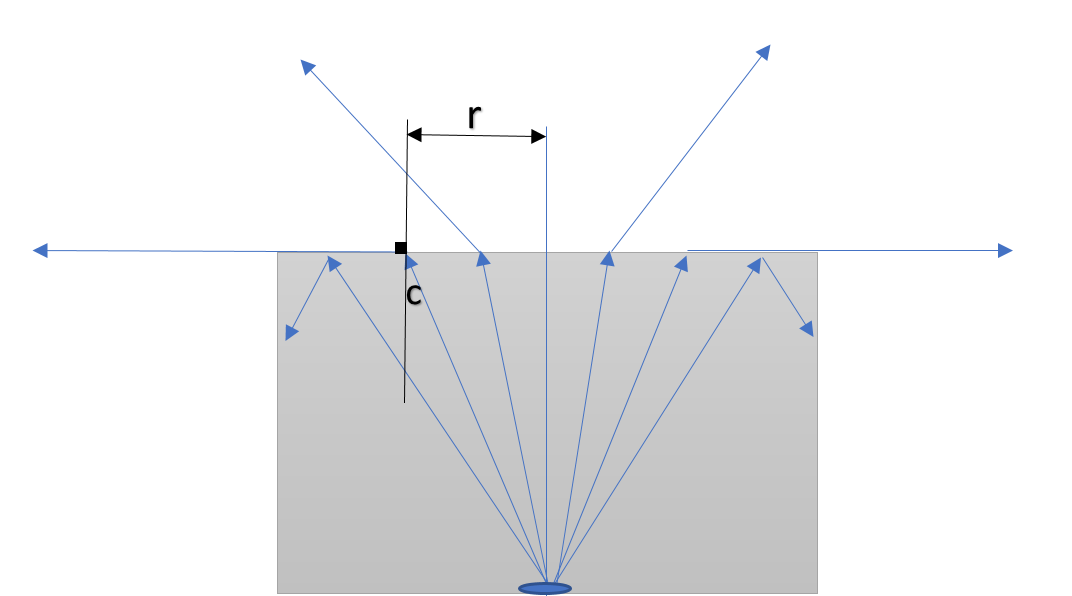Question
Question: A large glass slab \((\mu = \dfrac53)\) thickness 8 cm is placed over a point source of light on a p...
A large glass slab (μ=35) thickness 8 cm is placed over a point source of light on a plane surface. It is seen that light emerges out of the top surface of the slab from a circular area of radius r cm. What is the value of r?
Solution
Critical angle – It is an angle on which if light is incident from denser to rarer medium, it won’t go outside the medium but will refract through 90∘. After this angle, the light will come back in the same medium as if the mirror is placed in its path. This phenomenon is called total internal reflection, also known as TIR.
Formula used:
critical angle(c)=sin−1[μ1]
As shown in the figure, ‘c’ represents the critical angle, the refraction angle of whose ray is 90∘.
Complete answer:

Only that object could be seen by the human eye from which light after reflection or by any other means falls on the human eye. Here, in the question, we are given that only the area of radius ‘r’ can be seen. That means all the rays after ‘r’, are definitely not going out. This must be the point of critical angle.
Now, critical angle(c)=sin−1[μ1]
⟹c=sin−1(53)=37∘

Now, from the figure, we have;
tan(c)=8r
⟹tan37∘=8r
⟹r=8×43=6cm
Hence r = 6 cm.
Note:
The speed of light changes if it enters from one medium to another. Refractive index is a property of the medium which is the measure of how slow the speed of light gets on entering a medium. The refractive index is a unique property of a medium which can be constant or variable. Certain physical quantities like temperature govern the change of refractive index of a material. These concepts of total internal reflection (TIR) and critical angle are very important in understanding different natural phenomena like the formation of the rainbow is based on the concept of total internal reflection.
